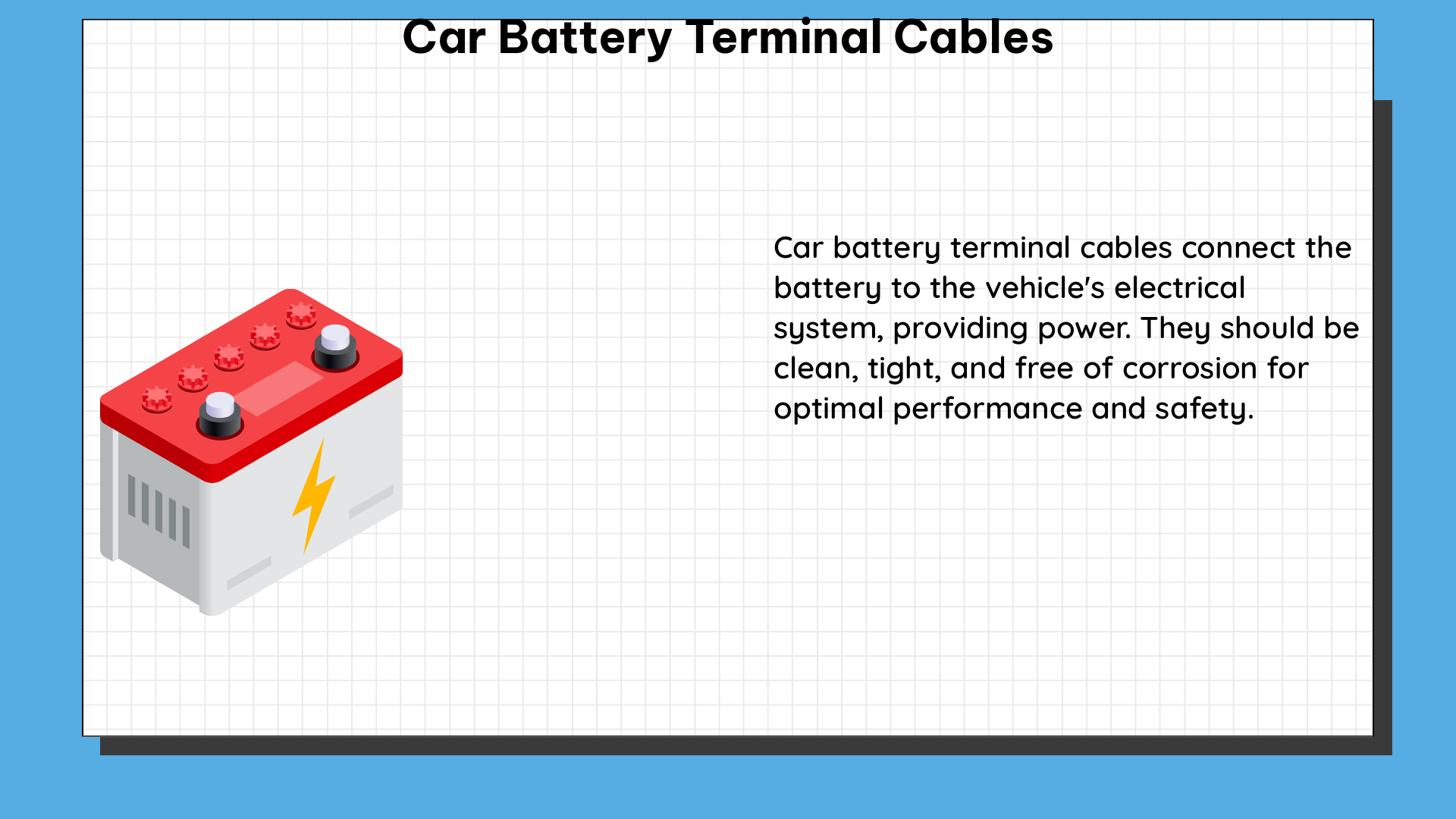Car battery terminal cables are a crucial component of any vehicle’s electrical system, and understanding their technical specifications and usage is essential for proper maintenance and repair. This comprehensive guide will provide you with in-depth insights into the world of automotive battery cables, covering everything from cable types and specifications to resistance measurements and troubleshooting.
Types of Car Battery Terminal Cables
Automotive battery cables are typically made of heavy-gauge copper, insulated with either PVC (polyvinyl chloride) or XLPE (cross-linked polyethylene). These cables come in three main specification types:
-
Type SGR (Synthetic Rubber Insulated): Designed for use in harsh environments, these cables feature a synthetic rubber insulation that provides excellent resistance to chemicals, oil, and abrasion.
-
Type SGT (Thermoplastic Insulated): Offering a more cost-effective solution, SGT cables are insulated with a thermoplastic material that still provides good protection against environmental factors.
-
Type SGX (Cross-linked Polyethylene Insulated): Considered the premium option, SGX cables feature a XLPE insulation that offers superior heat resistance, dielectric strength, and overall durability.
Technical Specifications of Car Battery Terminal Cables

Automotive battery cables are designed to withstand a wide range of operating conditions, with the following technical specifications:
- Voltage Rating: Automotive battery cables have a 60-volt rating, making them suitable for use in 12-volt electrical systems.
- Insulation and Flame Retardancy: The insulation on these cables is designed to be resistant to salt, fuel, oil, water, lubricants, and acid, as well as moderately high heat. They are also flame-retardant for added safety.
- Standard Test Requirements: SGT and SGX battery cables must meet stringent test requirements, including strand coating, physical properties (insulation), high temperature, dielectric, cold bend, flame, oil absorption, and abrasion resistance.
Choosing the Right Battery Cable Gauge
The gauge of an automotive battery cable is a critical factor to consider, as it depends on the specific application and power requirements. Most car batteries use a 12-volt power supply, which is best suited to a 6-gauge battery cable (the standard).
| Gauge | Typical Application |
|---|---|
| 4-gauge | Heavy-duty applications, such as high-performance vehicles or marine use |
| 6-gauge | Standard for most passenger vehicles |
| 8-gauge | Smaller vehicles or motorcycles |
It’s important to note that while battery cables can withstand up to 60 volts, they are primarily designed for 12-volt electrical systems, and using the appropriate gauge is crucial for ensuring safe and efficient operation.
Troubleshooting Car Battery Terminal Cables
When working with car battery terminal cables, it’s essential to understand the proper resistance measurements and how to identify potential issues. Here are some key points to consider:
-
Resistance Measurement: When measuring the resistance across the positive (+) and negative (-) terminals of a car battery, the reading should be 0 Ohms. This indicates a proper connection and no issues with the battery cables.
-
Shorted Positive Cable: If you encounter a 0.000 Ohm reading between the positive (+) and negative (-) battery cables, it may indicate that the positive cable is shorted against the chassis (-). This can happen if there are hot wires coming off the starter solenoid’s positive terminal, and it’s crucial to investigate and address the issue before using the vehicle again.
-
Drain Problems: A 0.000 Ohm reading between the positive (+) and negative (-) battery cables may also suggest a major drain problem in the electrical system. In this case, it’s important to thoroughly inspect the vehicle for any melted wires, shorts, or other issues that could be causing the drain.
By understanding the technical specifications and proper troubleshooting techniques for car battery terminal cables, you can ensure the safe and efficient operation of your vehicle’s electrical system.
References
- Automotive Battery Cable Specifications & Overview – IEWC.com
- What should resistance be across + and – bat cable (w/o bat obviously) – CorvetteForum.com
- What will happen if I connect the negative terminal first when installing a new car battery? – AskMechanics
- Volt reading between negative battery post and cable? – MR2OC
- How much resistance should I measure on a good positive battery cable? – SaabCentral.com

The lambdageeks.com Core SME Team is a group of experienced subject matter experts from diverse scientific and technical fields including Physics, Chemistry, Technology,Electronics & Electrical Engineering, Automotive, Mechanical Engineering. Our team collaborates to create high-quality, well-researched articles on a wide range of science and technology topics for the lambdageeks.com website.
All Our Senior SME are having more than 7 Years of experience in the respective fields . They are either Working Industry Professionals or assocaited With different Universities. Refer Our Authors Page to get to know About our Core SMEs.